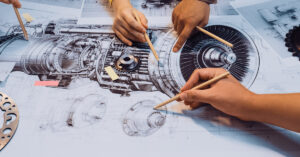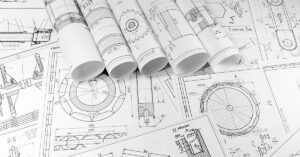
The everyday person doesn’t see inside the hustle and bustle of your typical warehouse, nor do they appreciate the opportunity to optimize efficiencies in such a place. But many of us industrial professionals are starting to see how the latest hardware and software technologies for warehouse automation have a real shot at changing the way many companies’ operations are handled.
In the past year alone, I’ve had about four or five warehouse automation machinery manufacturing projects come across my desk. I’ve only previously worked on two other projects like this in the entirety of my 13-year career. While looking into these warehouse automation projects, I’ve learned a lot about the industry and where it’s headed.
The game-changing technology involved in warehouse automation includes choreographing cobots, automated guided vehicles (AGVs), and autonomous mobile robots (AMRs). So, to me, it’s looking more and more like we are seeing the advancement of software and AI systems in warehouses and finding ways to utilize those alongside hardware to build something truly beautiful.
To learn more, I looked no further than one of my favorite industry magazines, Control Design. With a little hard work, maybe I can even contribute an article for their audience someday. In the meantime, I’ll use my own space here to comment on some of the cool aspects I learned about warehouse automation.
Safety in Warehouse Automation:
Being in the world of machinery design and manufacturing, we see how much time and effort is put into safety every day. Industry professionals understand that keeping industrial spaces safe is critical, and when building safety into machinery, light curtains, interlocks, pressure mats, and more are key. But I’ll admit, I’m quick to overlook what’s happening in warehouse environments.
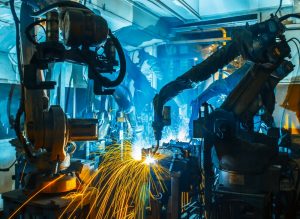 This Control Design article written by Mike Bacidore touches on a few aspects of how warehouse automation can directly affect safety conditions. I was particularly intrigued that sensing technologies have been advancing, which helps drive the safety performance of the equipment…
This Control Design article written by Mike Bacidore touches on a few aspects of how warehouse automation can directly affect safety conditions. I was particularly intrigued that sensing technologies have been advancing, which helps drive the safety performance of the equipment…
When using automation, employee safety is the highest priority, so the sensor technology in use must be accurate to ensure the safety of associates using the robots and the safety of anyone nearby. And similar to the sensing technology used in automated vehicles, collaborative robots can travel through work zones while remaining aware of the space around them.
Growth in the AMR Market:
Anecdotally, I knew the market was growing based on the nature of projects coming across my desk, the frequency of warehouse automation articles I was seeing, and–of course–the direction of warehouse-based companies like Amazon. But I didn’t realize what this growth actually was or what it meant for the industry as a whole.
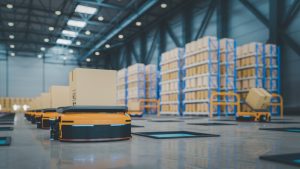 A recent article in Control Design reports that “….statistics from ABI Research show global shipments seeing a 40% annual growth rate with global shipments expected to exceed 500,000 by 2030.” This is interesting to me because warehouses are huge, but I’m willing to bet the typical large warehouse is using AMRs and other warehouse automation systems in volumes of dozens, rather than thousands. This points to more and more facilities adopting the technology, which I’ll guess will help the industry advance quicker and quicker.
A recent article in Control Design reports that “….statistics from ABI Research show global shipments seeing a 40% annual growth rate with global shipments expected to exceed 500,000 by 2030.” This is interesting to me because warehouses are huge, but I’m willing to bet the typical large warehouse is using AMRs and other warehouse automation systems in volumes of dozens, rather than thousands. This points to more and more facilities adopting the technology, which I’ll guess will help the industry advance quicker and quicker.
Material Handling Throughput of AMRs:
Throughput is extremely important in warehouse material handling. I wanted to know more about exactly how throughput could be increased by the efficiencies provided by the latest AMR technologies, and the good folks at Controls Design had my back.
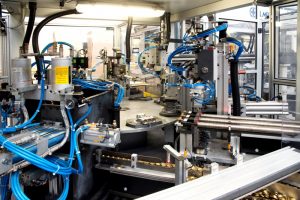
Looking at basic physics, it’s not too hard to determine that it must be some factor of distance, speed, and weight. Thinking from the lens of manufacturing operations, we can assume downtime has something to do with the equation.
By reading the article, these factors are blended nicely and boiled down to yield the following equation:
Throughput = Payload * Average Speed * (1 – Downtime Percentage) / Round Trip Distance
We’re talking about moving a large amount of material at a high rate, with low downtime over a certain distance. Of course, we can change the throughput by adding machines, changing payload ratings, speeding up the machine, or making it more reliable. I think the average speed variable will be important to consider. Since it’s an average, you should be able to get higher average speeds if the system is properly designed without a lot of starts and stops (like a fork truck tends to be subjected to).
However you slice it, we are in the budding stages of an exciting industry. Companies you never thought of will implement warehouse automation through AGVs, AMRs, and cobots, and innovative techniques and tricks will be developed and perforate throughout the industry like wildfire. I can’t wait to see what the future brings.
I recommend anyone in the business of controls design to subscribe to Control Design magazine right away so you can enjoy the full articles and stay up to date on these topics.
About the Author: Scott Baxter has spent over 12 years as the lead content writer at PEKO Precision Products. He has a passion for manufacturing which shines through his work and business relationships. He truly enjoys giving tours of the PEKO facility, as well as finding solutions for customers to help their businesses grow. At home, he loves making sure his three kids play outside and at work, he loves giving advice that helps machinery and equipment project stakeholders bring their products to market. Connect with Scott on LinkedIn.
Share article:








